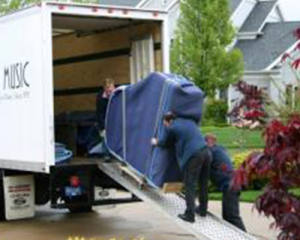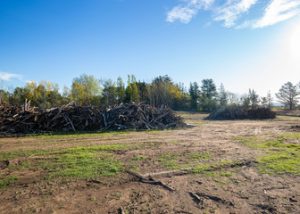Starting Moving Company Near Me can be lucrative and fulfilling, but it also requires knowledge of logistics and operations. This guide will provide a primer on how to start a moving company and make it a success.

Insurance is another important aspect to consider when hiring movers. Ensure the moving company is properly accredited and has enough coverage to cover damages in case of an accident.
When planning a move to a new location, it is important to understand the cost involved. Some factors that impact moving costs include the size of your home, the distance to your destination, and the services you need from a moving company. Understanding the average price structure of these services can help you budget effectively. In addition, exploring cost-saving strategies can also make a big difference in your relocation budget.
Residential movers usually charge by the hour for packing, loading, and unloading services. They may also provide other specialized services such as assembly or disassembly of furniture. Some residential movers offer exclusive use of their trucks for an extra fee, which can be worth it if you have high-value items that you want to protect.
When choosing a residential moving company, be sure to interview several candidates and ask for a thorough quote. Ensure that the company is licensed and has positive online reviews. Also, be sure to consider whether they provide insurance coverage for your belongings. Lastly, you should always ask for a not-to-exceed estimate. This will give you peace of mind knowing that the company will not exceed your move budget.
Long-distance moves are typically priced based on weight and mileage. They can be more expensive than local moves, especially if you have a large household that requires a larger truck. Additionally, you may need to pay additional transportation fees like fuel and tolls.
If you are planning a long-distance move, you should book your movers well in advance. Peak moving season, which is from May to September, will often result in higher prices due to increased demand. In addition, weekend and month-end moves tend to be more expensive than midweek or midmonth moves.
If you are planning a long-distance moving move, you should hire a professional moving company that specializes in this type of move. These companies typically have a team of trained, experienced professionals and use state-of-the-art equipment to ensure a safe and efficient move. They also have the ability to handle customs and shipping requirements. Additionally, they can offer storage services for your belongings if necessary.
Reputation
It’s important to choose a moving company with a solid reputation. Check online reviews and ask friends, family, and colleagues for recommendations. Also, make sure the company has a transparent pricing structure and no hidden fees. Lastly, look for insurance. This will protect your belongings in case of damage during the move. Some companies offer a basic insurance, while others provide full-value protection. These additional services can help make your move more seamless and stress-free.
Services offered
Moving companies offer a range of services to ease the stress of moving. These services include packing and unpacking, furniture disassembly and reassembly, and transportation. Some even offer storage solutions and specialty item moving. Choosing the right company for your move will save time, money, and effort. The best movers will also ensure that your belongings are safe and secure during transport.
Some companies offer add-on services like custom crating and uncrating, which can be helpful for shipping large or oddly shaped items, such as appliances, electronics, or furniture. This service can help you avoid damage and minimize the amount of time needed to unpack and reassemble these items. In addition, they can also provide specialty packaging for fragile and delicate items.
When selecting a moving company, make sure they have a transparent pricing structure without hidden charges. Ask for a written estimate that includes the cost of all services and any additional fees. You should also ask about their insurance options, as some offer full-value protection, which will reimburse you for the value of your belongings in the event they are damaged during the move.
A reliable moving company will take care of all the details, from preparing your inventory list to managing the moving process. They will assign a dedicated move coordinator to ensure clear communication throughout the relocation and answer any questions you may have. In addition, they will use advanced logistics technology to streamline booking and tracking processes for a better customer experience. They will also offer eco-friendly packing materials, demonstrating their commitment to sustainability practices.
The services offered by a moving company vary depending on the size and distance of your move. Local movers, or intrastate movers, specialize in moves within a 100-mile radius, making them an ideal choice for smaller moves. They are familiar with the area’s layout and regulations, which makes them a great choice for those who want to move quickly and easily. In addition, they will provide high-quality packing materials for your belongings, saving you the cost of sourcing and purchasing these supplies yourself.
Insurance
Having the right insurance coverage is vital for any business, and it’s no exception for moving companies. There are several different types of business insurance policies that cover a variety of situations and risks. A few of the most important are general liability, commercial property and workers’ compensation. In addition to these, some moving companies may also need storage insurance for items in transit or while they’re stored.
Whether you’re hiring movers for an interstate or intra-state move, you should understand the types of insurance coverage they offer before signing a contract. Under federal law, all interstate movers are required to offer two different valuation options for their services: released value protection and full-replacement value protection. Both provide liability protection for your belongings during the move, but each plan has its own terms and conditions that you should read carefully.
If you’re unsure of what type of coverage you need for your move, it’s best to ask your moving company for a written copy of their policy terms and details. This will help you make an informed decision about which plan is right for you. Additionally, it’s a good idea to compare quotes from multiple moving companies before making your final decision.
Moving companies are responsible for the lives of their clients and customers’ valuable belongings, and they want to be able to trust that they will treat their customers’ possessions with care. This is why many clients choose to use a fully licensed, insured moving company to transport their belongings. However, while peace of mind makes it worth the extra cost, it’s not always possible to avoid damage to items during transit or in storage.
The insurance coverage a moving company has is vital for its reputation and financial stability. It protects the company from third-party claims, such as those caused by an employee’s physical injury or an item being damaged or lost during transport. It also protects the company from lawsuits filed by disgruntled customers. Most moving companies purchase a standard business owners policy that includes both general liability and commercial property coverage. However, some companies also purchase specialized inland marine insurance or workers’ compensation insurance.








